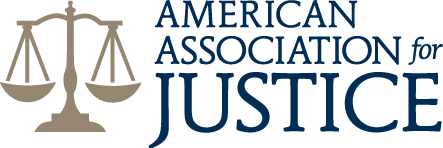Personal injury law in Texas often revolves around one pivotal concept: negligence. For individuals seeking justice and compensation for injuries sustained due to another’s actions, understanding the nuances of negligence is crucial. At Chavez Law Firm, we are committed to shedding light on this fundamental legal principle to empower you with the knowledge necessary to pursue your case with confidence and clarity.








Defining Negligence in Personal Injury Law
Negligence is the cornerstone of most personal injury claims. It refers to a party’s failure to exercise reasonable care, resulting in harm to another person. In Texas, as in other states, proving negligence is essential for a successful personal injury claim. This process involves demonstrating that the defendant had a duty to act with care, breached that duty, and caused damages as a result. Each of these elements must be clearly established to hold the negligent party accountable.
The first element, duty of care, refers to the legal obligation one has to avoid causing harm to others. This duty varies depending on the relationship between the parties and the circumstances of the incident. For instance, drivers have a duty to follow traffic laws and operate their vehicles safely, while property owners must ensure their premises are free of hazards that could injure visitors.
The breach of duty occurs when a person fails to meet the standard of care expected in a given situation. This breach can take many forms, from distracted driving to failing to repair a broken stairway. Establishing that a breach occurred often requires evidence such as witness testimony, surveillance footage, or analysis.
Causation is the link between the breach of duty and the harm suffered by the plaintiff. It must be shown that the defendant’s actions directly caused the injury. This can be a complex aspect to prove, as the defense may argue that other factors contributed to the injury. Medical records, accident reports, and testimony can be crucial in demonstrating causation.
Lastly, damages refer to the losses suffered by the plaintiff as a result of the injury. These can include medical expenses, lost wages, pain and suffering, and more. Documenting these losses thoroughly is essential for recovering fair compensation.

Protecting Your Rights
Comparative Fault in Texas Personal Injury Cases
In Texas, the legal doctrine of modified comparative fault, also known as proportionate responsibility, plays a significant role in personal injury cases. This doctrine allows for the allocation of fault among multiple parties, including the plaintiff. If a plaintiff is found to be partially responsible for their injury, their compensation will be reduced by their percentage of fault.
For example, if a plaintiff is awarded $100,000 in damages but is found to be 20% at fault for the accident, they will receive $80,000 instead. However, if the plaintiff is found to be more than 50% at fault, they are barred from recovering any compensation. This aspect of Texas law underscores the importance of presenting a compelling case that minimizes the plaintiff’s perceived fault.
Statute of Limitations for Personal Injury Claims in Texas
Timing is a critical factor in personal injury cases. In Texas, the statute of limitations for filing a personal injury lawsuit is generally two years from the date of the injury. Failing to file within this timeframe can result in the loss of your right to seek compensation. There are exceptions to this rule, such as cases involving minors or instances where the injury was not immediately discoverable. However, it is always advisable to act promptly and consult with a knowledgeable attorney so that your claim is filed within the legal deadline.
Types of Personal Injury Cases Involving Negligence
Negligence can lead to a wide variety of personal injury cases. Automobile accidents are among the most common, often resulting from drivers failing to adhere to traffic laws or engaging in reckless behavior. Slip and fall accidents, which occur due to hazardous conditions on someone else’s property, also frequently involve negligence. Medical malpractice cases arise when healthcare professionals fail to provide the standard of care expected, resulting in patient harm. Other examples include product liability cases, where manufacturers are held accountable for defective products, and workplace accidents, where employers may be negligent in maintaining safe working conditions.
Each type of personal injury case involves unique legal considerations and challenges. For instance, proving negligence in a medical malpractice case often requires detailed medical evidence and testimony to establish that the healthcare provider deviated from accepted standards. Similarly, product liability cases may necessitate thorough investigation and technical analysis to demonstrate that a defect caused the injury.
The Role of Evidence in Proving Negligence
Gathering and presenting evidence is a critical aspect of proving negligence in personal injury cases. This evidence can take many forms, including photographs of the accident scene, medical records, eyewitness accounts, and analysis. The more comprehensive and compelling the evidence, the stronger the case for negligence.
Photographic evidence can be particularly powerful in showing the conditions that led to an accident. For example, photos of a wet floor without warning signs can vividly illustrate the negligence of a property owner in a slip and fall case. Medical records, on the other hand, provide a detailed account of the injuries sustained and the treatment required, helping to establish the extent of damages.
Eyewitness testimony can also be invaluable, offering an independent perspective on the events leading to the injury. Witnesses can corroborate the plaintiff’s account and provide additional details that strengthen the case. In complex cases, testimony may be necessary to explain technical aspects to the court. For instance, in a medical malpractice case, a medical specialists can clarify how the standard of care was breached and how it resulted in harm to the patient.
Challenges in Proving Negligence
While the concept of negligence may seem straightforward, proving it in court can be challenging. Defendants often employ various strategies to refute claims of negligence, such as disputing the evidence or arguing that the plaintiff’s actions contributed to the injury. Insurance companies, representing the defendant, typically have significant resources and experience in minimizing payouts, making it even more critical for plaintiffs to build a robust case.
One common defense tactic is to question the causation link between the defendant’s actions and the plaintiff’s injuries. The defense may argue that the injuries were pre-existing or caused by other factors. To counter this, plaintiffs must provide clear and convincing evidence that directly ties their injuries to the defendant’s negligence. This often requires meticulous documentation and testimony.
Another challenge is overcoming the perception of shared fault. In Texas, where comparative fault rules apply, defendants may attempt to shift some of the blame onto the plaintiff to reduce their liability. This makes it essential for plaintiffs to present a compelling narrative that minimizes their own responsibility while highlighting the defendant’s negligence.
The Importance of Legal Representation
Given the complexities and challenges involved in proving negligence, having legal representation is crucial. An experienced personal injury attorney can help gather and preserve evidence, navigate the legal intricacies, and advocate effectively on your behalf. They can also negotiate with insurance companies to seek a fair settlement, or, if necessary, represent you in court.
At Chavez Law Firm, our dedicated team understands the intricacies of Texas personal injury law and is committed to providing compassionate, effective representation. We work tirelessly to so that our clients receive the compensation they deserve for their injuries. Whether you have been injured in a car accident, slip and fall, medical malpractice incident, or any other situation involving negligence, we are here to guide you through the legal process and fight for your rights.
Seeking Justice and Compensation for You
The aftermath of a personal injury can be overwhelming, with physical pain, emotional distress, and financial burdens compounding the challenges faced by victims. Understanding negligence and how it applies to your case is a vital step towards seeking justice and compensation. By recognizing the duty of care owed to you, identifying breaches of that duty, and linking those breaches to your injuries, you can build a compelling case for negligence.
However, navigating this process alone can be daunting. Legal experience is essential so that all aspects of negligence are thoroughly addressed and that you receive the compensation you need to recover and move forward. At Chavez Law Firm, we are committed to standing by your side, and providing the legal support and guidance necessary to pursue your case with confidence.
If you or a loved one has been injured due to someone else’s negligence, do not hesitate to reach out to us. Our team is ready to listen to your story, assess your case, and help you understand your legal options. Contact Chavez Law Firm today to schedule a consultation and take the first step toward securing the justice and compensation you deserve.



